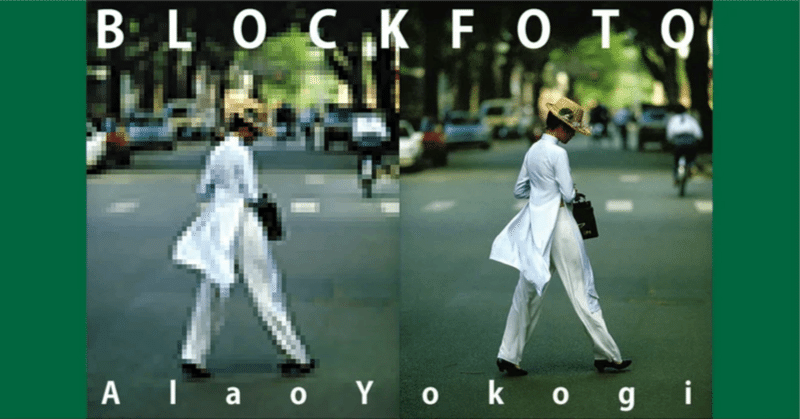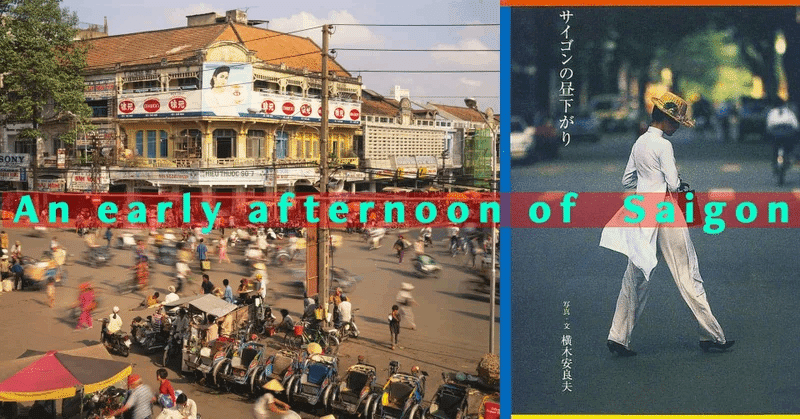
BLOCKFOTO NFT art Saigon 1994 2023 An early afternoon of Saigon Narrative English version
I am going to sell this ao dai photo blockfoto at NFT Art soon.
JAPANES VERSION 日本語版→
This story began in October 1994.
It began in October 1994.
In the center of H.C.M.C. (Ho Chi Minh City, formerly Saigon City), Vietnam.
A woman in an ao dai sashayed across the humidity-saturated Letang Thong Street behind the Continental Hotel in the Saigon district.
My camera was equipped with a 200 mm telephoto lens. I followed her back through the viewfinder. Then she turned down an alley. I followed her, stood on the corner, and looked around the street. Suddenly, as if in a daydream, she was gone. It was my first visit to Saigon.
I returned to Japan and developed the film. I returned to Japan and developed the film, and there was a frame that was exactly as I had seen it with my naked eye, as if it had been staged.
The next year, when I visited Saigon for the second time, I took this photograph and showed it to actresses, singers, and models working in Saigon, but none of them knew or had seen it.
She was the most impressive ao dai woman I met in Vietnam. She was the most impressive ao dai woman I had ever met in Vietnam, but she said that the fabric, pattern, and shape of this ao dai were quite different from those of a regular ao dai. I wondered what kind of life she was leading. I imagined her daily life. Then I started my journey to find her.
Canon EOS 5 EF 200mmF2.8 Velvia +1 intensify develop LBA2 filter


In 2001, Dentsu contacted me to use the ao dai photo I took for the cover of "Late Afternoon in Saigon" for an advertisement, an announcement poster for ANA's new flight between VIETNAM, Ho Chi Minh City, and Narita from March.
The original was a 35mm portrait photo. The original was a 35mm portrait photo, which was stretched to the left and right in the printing process. The original's daydream-like expression is further amplified. I have been involved in advertising for a long time, so I have no resistance to altering photographs. I recognize it as a separate work.
It is interesting to see the difference in expression between the original photograph and the poster. This B0 poster was put up all over Tokyo.
ARTDIRECTOR/RYOKO ISHIOKA DENTSU
An early afternoon of Saigon

In 1994, U.S. sanctions were lifted and Japan Airlines began direct flights from Kansai International Airport. Before that, I was assigned to cover Vietnam, which was featured in a special issue of NAVI, a car magazine, and in a separate volume of Kadokawa Shoten's Wild Age, which included an advertisement by Toshihiko Yahagi and Barney's. I did not cover Vietnam in such detail, but I did cover the country in about 10 pages. It was not such a detailed interview, but an elegant one that lasted about 10 days. The group consisted of novelist Toshihiko Yahagi, NAVI editor-in-chief (now GQ editor-in-chief), art director Ken Matsubara, Barneys New York JAPAN director Midori Takahashi, an editor from Kadokawa Shoten, and myself. This photo of Ao Dai was used in OP magazine.


While everyone else was at Saigon tourist making arrangements for Hue, I was walking alone along Le Thang Thong Street. A woman crossing a tree-lined street in the distance. I took six quick shots with my Canon Eos 5 with a 200mm f/2.8 lens. One of them was completely blurred, but the rest were perfect. This is one of them.
This photo was later used in an advertisement for ANA's inaugural flight to Vietnam.
Nonfiction writer Kotaro Sawaki wrote in his book "Northward on Route 1" that he decided to go to Vietnam after seeing this photo. However, when he went there, he wondered why there were no women in ao dai, let alone fashionable ones like these. Perhaps he went there during the summer vacation when there were no female students. Then I found a woman in ao dai standing on a boat on the Mekong River. I was so fascinated that I took a picture of her. But it was a model in the middle of a photo shoot. I wondered if Sawaki had taken my picture from the side during the same photo shoot, and my brush slipped and I ended up writing about it. It seems that everyone had thought this photo was staged since I took it.
Several years later, in a separate volume of my own book, "Ricoh GX100," I listed the photographs taken before and after the photo as evidence, and confronted Kotaro Sawaki with the fact that I had indeed taken the photo in the city by accident.
Three or four years later, an editor from Shinchosha contacted me and sent me a copy of Sawaki's book. In the book, which was a compilation of Sawaki's own stories of failure, he wrote about this photograph.

Novel: Eating Fever, Naked Fruit, Kodansha
Since then, I have visited Vietnam many times, looking for the woman in the ao dai, but I could not find her. I began to write in earnest in the late afternoon in Saigon. While imagining who the woman in the ao dai was, I became obsessed and even wrote a novel. At first, it was supposed to be published by Kadokawa, but after some twists and turns, it was published by Kodansha in June 2003. I think it has the scent of Vietnam at that time. Now I think I should have chosen "Dragon Fruit" for the title. I asked Takeji Hayakawa to draw the cover of the book, and I chose this one from among many others. There were other paintings with a brighter, lighter touch.
もしよろしければ 応援サポートお願いします。
